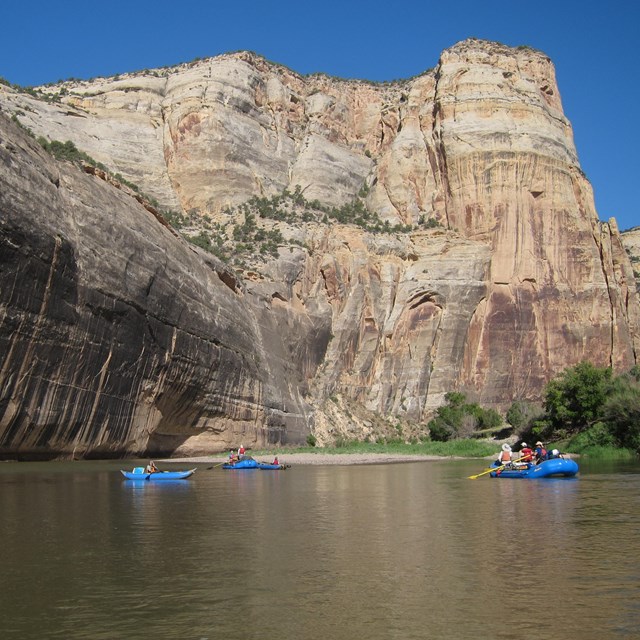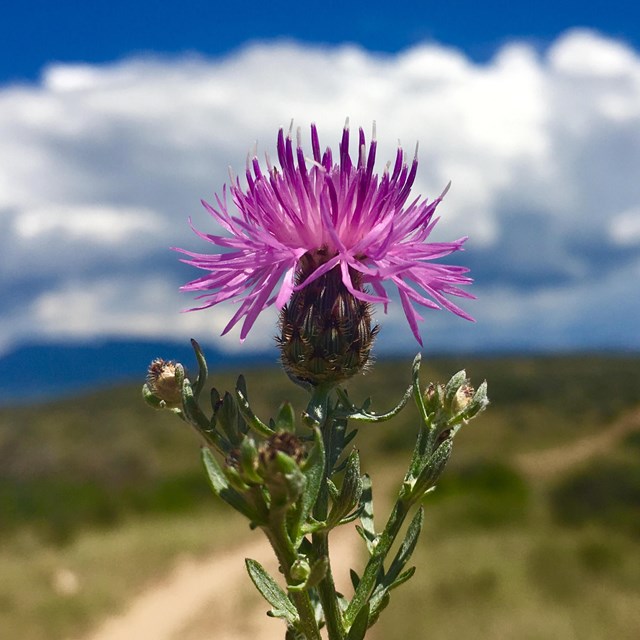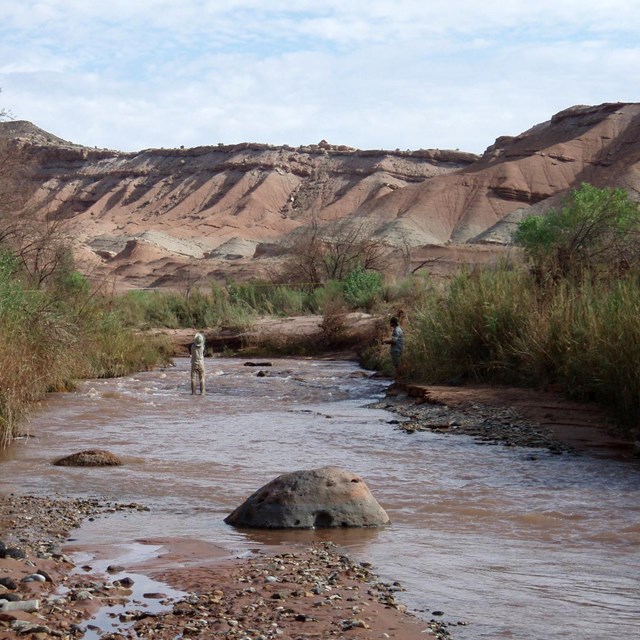Water, plant communities, landbirds, and soils—these are some of the park "vital signs" chosen by park and partner scientists for us to monitor. Vital signs are particular species, habitats, landscapes, and abiotic factors (e.g., water, air, soil) that help indicate the overall health or condition of park ecosystems. These key elements, and their associated processes, are part of what park managers are charged with conserving "unimpaired for the enjoyment of future generations." Knowing if and how key resources are changing can help park managers develop effective approaches to management, restoration, and mitigation.
To monitor park vital signs, the Northern Colorado Plateau Network uses the protocols shown below.
Monitoring Protocols
-
 Air Quality
Air QualitySix NCPN parks are Class I areas, receiving the highest protection under the Clean Air Act
-
 Big Rivers
Big RiversBig rivers and their associated riparian zones are crucial to both recreation and ecosystem health
-
 Climate Change
Climate ChangeClimate is a key physical driver of ecosystem structure and function
-
 Invasive Exotic Plants
Invasive Exotic PlantsInvasive exotic plants are one of the most significant threats to natural resources in the national parks today
-
 Land Surface Phenology
Land Surface PhenologySatellite imagery is used to measure vegetation greenness and snow-cover extent
-
 Landbirds
LandbirdsLandbirds are sensitive to habitat change, making them good indicators of ecosystem integrity
-
 Landscape Dynamics
Landscape DynamicsLandcover types are fundamentally important to the natural diversity of ecosystems
-
 Springs, Seeps, and Hanging Gardens
Springs, Seeps, and Hanging GardensThese water sources are important oases in desert landscapes
-
 Upland Vegetation and Soils
Upland Vegetation and SoilsUpland vegetation and soils provide energy and habitat for species diversity
-
 Wadeable Streams
Wadeable StreamsRiparian ecosystems are potentially sensitive indicators of landscape-level change
-
 Water Quality
Water QualityInformation on water quality and quantity helps park managers to ensure visitor safety and manage potential impacts
Last updated: June 11, 2025
